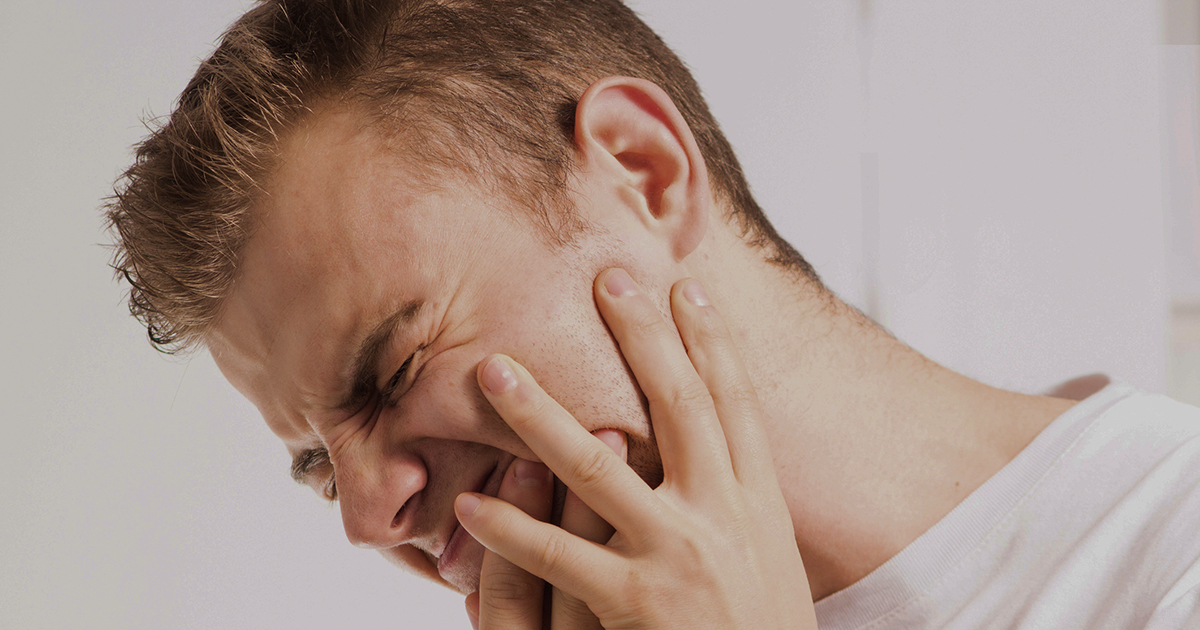Symptoms Of Temporomandibular Joint Disease
The majority of individuals don't think about their jaw every day. However, if you suffer from temporomandibular joint (TMJ) disease, you may be acutely aware of the importance of a fully functional jaw to your overall health and wellbeing. Your jaw is essential to eating, drinking, and communicating, and loss of movement or pain in this area can severely limit everyday activities. Temporomandibular joint disease can manifest as a variety of symptoms ranging from jaw tenderness and pain to around the ears to trouble chewing. Get to know the characteristic symptoms of this condition now.
Jaw Pain And Tenderness

Temporomandibular joint disease may manifest as jaw pain and tenderness. Those suffering from this condition may experience a general, persistent pain the face, particularly around the jaw. However, pain and tenderness may not be restricted to this area and may radiate outward to the face, neck, and shoulder on one or both sides of the body. TMJ disease sufferers may feel this dull pain when chewing, eating, or talking, or may feel tenderness when applying pressure to the skin around the jaw. Tenderness may be accompanied by swelling on the face near the jaw joint, but the severity of swelling can vary widely from individual to individual.
Learn about more of the potential symptoms of temporomandibular joint disease now.
Pain Around The Ears

Temporomandibular disease patients may also feel pain around the ears when they speak, chew, or open their mouths wide. Some individuals with this condition have even described the sensation as similar to an earache or ear infection. Initially, patients with TMJ disease may feel subtle muscle spasms in and around the ears when chewing excessively. However, if left untreated, these mild spasms can progress into an intense, radiating pain. Stress, improper bite, tooth grinding, and prior jaw injuries may all contribute to this pain and exacerbate temporomandibular joint disease.
Continue reading for more information on symptoms now.
Difficulty Chewing

Temporomandibular joint disease patients may find they have difficulty chewing or opening their mouths to their fullest extent. Individuals with this condition may also feel pain or an uncomfortable sensation when trying to eat and drink and have difficulty chewing as well. Sufferers have described this sensation as an awkward bite, one in which the upper and lower teeth do not fit together properly and cause discomfort. This feeling may develop over an extended period or may occur suddenly. Additionally, patients with TMJ disease may also find it painful to open their mouths wide, and may attempt to avoid doing so to prevent potential discomfort.
Keep reading for more symptoms patients should watch out for.
Jaws Locking

One of the most noticeable and worrying symptoms of temporomandibular joint disease is when the jaws lock. Jaw locking occurs when a person suffering from temporomandibular disease is unable to open or close their jaws at will. In some cases, the jaw will lock in an open position and the sufferer will not be able to close their mouth, and in others, the patient's jaw becomes locked in a closed position so the patient cannot open their mouth. Although very scary, jaw locking is typically temporary. Once the jaw joints loosen, the mouth may be open or closed as desired.
Continue for a trademark symptom of TMJ disease now.
Clicking Noise In Jaw

Finally, patients with temporomandibular joint disease may hear and feel a clicking, popping, or grating noise in their jaws when they open and close their mouth. This clicking or popping noise can be attributed to the catching or locking of the joint that also causes a locked jaw. The noise can be concerning, but clicking in the jaw is generally not painful, and may not even be attributed to temporomandibular disease in some cases. However, some patients may experience pain along with the clicking, grinding, or popping noise in their jaw, which is considered to be a primary indicator of temporomandibular joint disease.